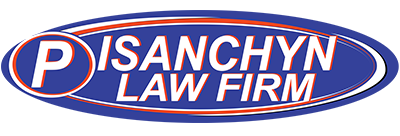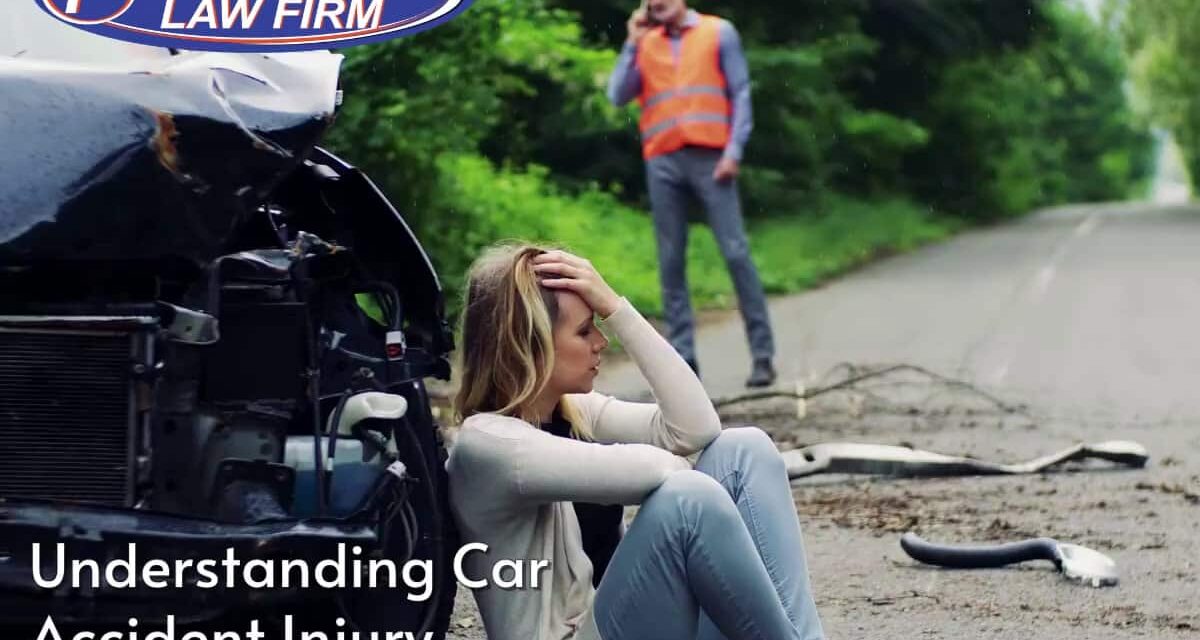When you’ve been seriously injured in a Pennsylvania car accident, it doesn’t take long for medical bills, therapy costs, and lost wages to pile up. Then you learn that the at-fault driver only carried “100/300 coverage” — and you start to wonder, What does that even mean?
And more importantly, what happens if my injuries cost more than their insurance covers?
At The Pisanchyn Law Firm, we’ve seen this scenario countless times. Below, we’ll break down exactly how car insurance settlements work in Pennsylvania, what those “100/300” numbers really mean, and how you can still pursue the compensation you deserve even when the policy limits seem like a dead end.
Understanding Auto Insurance Limits in Pennsylvania
Every driver in Pennsylvania is legally required to carry liability insurance. This coverage pays for injuries or property damage you cause to someone else in an accident.
When you see a policy described as “100/300”, it refers to the liability limits — the maximum amount an insurer will pay per claim.
| Policy Term | What It Means |
|---|---|
| $100,000 per person | The maximum amount the insurance company will pay for injuries to one individual in an accident. |
| $300,000 per accident | The maximum total amount the insurer will pay if multiple people are injured in the same crash. |
So, if a negligent driver in Scranton rear-ends you and causes $120,000 in injuries to one person, their insurance will only pay up to $100,000. Even if your actual damages are higher, the insurer’s obligation ends at that policy limit.
Is $100,000 Really a “Hard Cap”?
In most cases, yes — but not always.
Insurance companies are contractually obligated to pay only up to the limits listed in the policy. Once they pay that out, their legal responsibility usually ends. However, there are exceptions where an experienced personal injury attorney can go beyond the policy limit and recover more.
1. Multiple Sources of Insurance
You may be able to pursue compensation from other available policies, including:
-
Your own Underinsured Motorist (UIM) coverage
If your damages exceed the other driver’s insurance, your UIM coverage can step in to pay the difference — up to your own limit. -
Household vehicle policies
In some situations, UIM benefits can be stacked across multiple vehicles on your policy. -
Umbrella or secondary policies
If the at-fault driver had additional coverage (common with business or commercial policies), that higher tier can be accessed.
2. Bad Faith or Negligence by the Insurance Company
If the insurer acts in bad faith — for example, by refusing to settle a clear liability claim within the policy limit — they can sometimes be held responsible for the entire amount of the verdict, even if it exceeds $100,000.
This is rare but powerful — and something only an experienced Pennsylvania injury attorney can identify and pursue.
3. Third-Party Liability
Sometimes other parties may share fault — for example:
-
A commercial employer (if the driver was on the job)
-
A vehicle manufacturer (if a defect contributed to the crash)
-
A bar or restaurant (if a drunk driver was overserved)
By investigating beyond the obvious driver, you can often find additional coverage to pursue.
What If My Injuries Exceed the Policy? A Realistic Example
Let’s say you’re driving home on I-81 near Wilkes-Barre when another driver crosses into your lane, causing a head-on collision. You suffer multiple fractures, a concussion, and need ongoing physical therapy. Your total damages exceed $120,000 between:
-
ER and hospital bills
-
Surgery and rehabilitation
-
Physical therapy
-
Lost wages from months off work
-
Future medical care and reduced earning capacity
The at-fault driver carries a 100/300 policy — meaning their insurer will offer the full $100,000 limit.
Now what?
Step 1: Your Attorney Demands the Policy Limit
Your lawyer sends a policy limits demand to the insurance company. This forces them to reveal the full coverage amount and, in many cases, pay it quickly to avoid bad-faith exposure.
Step 2: Activate Your Underinsured Motorist (UIM) Coverage
If you have UIM coverage under your own policy, you can file a claim for the remaining damages. For example:
-
At-fault driver pays $100,000
-
Your UIM coverage adds another $100,000
-
You recover a total of $200,000
Step 3: Evaluate Future Losses
If your injury is long-term or permanent, your attorney will work with medical and economic experts to calculate future costs — such as additional surgeries, ongoing therapy, or diminished earning ability. These future damages can be recovered under your UIM claim or, in some cases, through third-party defendants.
Pennsylvania’s “Limited Tort” vs. “Full Tort” and How It Impacts Settlements
Pennsylvania’s tort election also plays a huge role in how much compensation you can pursue.
-
Limited Tort: Your ability to recover for pain and suffering is restricted unless you meet the “serious injury” threshold (significant disfigurement, impairment, or medical expense).
-
Full Tort: You can pursue all damages — including pain and suffering — regardless of injury severity.
Even with the same policy limits, drivers with Full Tort coverage have far stronger legal leverage when injuries exceed insurance limits.
How Settlement Negotiations Work
Insurance companies in Pennsylvania settle claims based on liability (who’s at fault) and damages (the cost of injuries, lost income, and suffering).
Typically, the process goes like this:
-
Investigation: Your attorney gathers medical records, bills, and proof of lost wages.
-
Demand Package: A comprehensive letter outlining the total damages and justification for payment.
-
Negotiation: The insurer evaluates the claim, compares it to the policy limit, and negotiates a settlement.
-
Policy Limit Offers: If damages exceed limits, your lawyer demands the full payout.
-
Underinsured Claim: Once that payment is made, your attorney turns to your own insurer for additional funds.
This is why having an experienced attorney is critical — negotiating policy limits and handling UIM claims requires precision and timing.
Can the At-Fault Driver Be Personally Sued for More?
Technically, yes — but practically, it’s rarely effective.
If the at-fault driver only has a 100/300 policy, they likely don’t have significant personal assets. Pennsylvania’s homestead laws protect basic assets (like their home, retirement accounts, and wages) from being seized.
However, in cases involving commercial drivers, wealthy individuals, or corporate vehicles, your attorney can pursue personal judgments and liens to collect more than the insurance coverage.
Common Pennsylvania Insurance Terms You Should Know
| Term | Meaning |
|---|---|
| Bodily Injury Liability (BI) | Pays for injuries you cause to others. 100/300 refers to BI coverage limits. |
| Property Damage Liability (PD) | Pays for damage you cause to another person’s property. Usually $50,000 per accident. |
| Uninsured Motorist (UM) | Protects you if you’re hit by someone with no insurance. |
| Underinsured Motorist (UIM) | Kicks in when the at-fault driver’s insurance isn’t enough to cover your losses. |
| Stacking | Allows you to combine UIM limits across multiple vehicles for greater coverage. |
| Umbrella Policy | Provides an extra layer of liability coverage beyond your primary auto policy. |
| Bad Faith Claim | Legal action against an insurer that unreasonably refuses to settle a valid claim within policy limits. |
Protecting Yourself Before a Crash Happens
The best time to protect yourself isn’t after the accident — it’s when you choose your coverage.
Always Choose Full Tort
Limited tort may save a few dollars, but it can cost you thousands if you’re seriously injured.
Increase Your UIM Limits
Match or exceed your liability coverage. If you carry 250/500 coverage, you’ll have that much protection if you’re hit by someone with lower limits.
Consider Stacking Policies
In Pennsylvania, you can “stack” UIM coverage from multiple vehicles in your household — dramatically increasing your available protection.
Example Case: Beyond the Policy Limit
A client of ours was injured in a Luzerne County crash caused by a distracted driver. The at-fault driver carried a 100/300 policy, but the client’s injuries exceeded $200,000.
Here’s how we maximized recovery:
-
We demanded and received the full $100,000 from the at-fault driver’s insurer.
-
We filed a UIM claim under the client’s policy, which added another $100,000.
-
We discovered the at-fault driver was working for a delivery company — and pursued the company’s commercial liability policy for additional compensation.
In total, the client recovered nearly $300,000, even though the other driver’s “limit” was $100,000.
That’s why these numbers aren’t the end of the story — they’re the beginning of a legal strategy.
How Pisanchyn Law Firm Can Help
At The Pisanchyn Law Firm, our attorneys know how to navigate complex insurance claims, force full-limit payouts, and uncover hidden sources of coverage.
If you or someone you love was injured in a Pennsylvania car accident and your damages exceed the other driver’s policy limit, contact us right away. The earlier we can intervene, the better we can protect your recovery and future.





